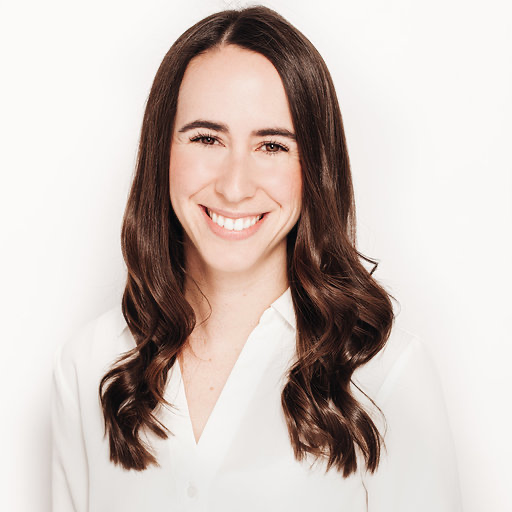The Powerful Impact of Digital Hearing Care on Accessibility and Patient-Focused Hearing Care
AudiologyOnline: What is the current global situation regarding hearing loss?

Vanessa Gauthier-Davidson: The World Health Organization's 2024 Hearing Loss and the Role of Health Care Providers: Fact Sheet reveals some alarming trends about hearing health. Currently, over 1.5 billion people worldwide are experiencing some form of hearing loss; this is expected to increase to around 2.5 billion by 2050. This data highlights the urgent need for increased awareness and resources to address this growing issue.
AudiologyOnline: What are the challenges associated with accessing hearing healthcare services?
Vanessa Gauthier-Davidson: Patients may face a number of challenges when it comes to accessing hearing healthcare services. Perhaps the most significant of these obstacles is the limited availability of hearing care professionals, which can make it difficult for patients to access the care they need. In addition, the high costs of audiological testing equipment can also be a major barrier for HCPs to scale their operations to meet the growing care demand. Finally, difficulties reaching patients with mobility challenges or in remote geographic locations can also make it difficult for patients to receive the care they need.
According to the same WHO report, there are around 14,600 audiologists and 10,000 hearing aid specialists in the United States. This means that there is only one hearing care professional available for every 14,000 Americans. In 2013, Windmill and Freeman conducted research that revealed that the number of new audiologists entering the field must increase by 50% to satisfy the hearing care needs of the American population. Additionally, the turnover rate among these graduates needs to be lowered from the current rate of 40% to 20%.1
AudiologyOnline: How does digital hearing care address these challenges?
When we talk about digital hearing care technology, we are referring to software-based audiometers and online hearing screeners. These technologies have advanced audiology features that provide innovative solutions to common challenges. For example, online hearing screeners raise awareness by allowing patients to take hearing screening tests in the comfort of their own homes. This convenience removes the initial barrier of traveling to a clinic, making it easier for individuals to get an initial estimate of their hearing ability and encouraging them to seek further professional evaluation if needed. Software-based audiometers, such as SHOEBOX Consult, are fitted with advanced technology, allowing for hearing assessments to be conducted without the need for traditional sound booths. This is made possible through features like noise monitoring and ears-occluded bone conduction testing. These advancements improve the convenience of testing for both patients and clinicians, whether it's done in-clinic or remotely.
AudiologyOnline: What role does early detection play in managing hearing health?
Vanessa Gauthier-Davidson: Early detection plays a vital role in managing hearing health, as hearing loss can often go unnoticed for a long time before symptoms become evident. Untreated hearing loss can lead to negative outcomes such as cognitive decline. It can also worsen feelings of isolation, depression, anxiety, and significantly impact one's overall quality of life.2
Thanks to advancements in digital hearing care, accurate audiometric evaluations are more easily accessible, facilitating early identification and effective management of hearing loss. This early intervention is crucial for preventing adverse effects and improving patient outcomes.
In addition, online hearing screening tools like SHOEBOX Online have made it easier for individuals to conduct quick and accurate hearing tests from the comfort of their own homes, only requiring an internet-connected device and a pair of headphones.
AudiologyOnline: How does teleaudiology enhance patient care?
Vanessa Gauthier-Davidson: Teleaudiology enhances patient care by addressing several key challenges in the delivery of hearing healthcare. It removes geographical barriers, allowing patients in remote or underserved areas to access audiological services more conveniently. However, patients still need to connect with an audiologist licensed in their state. This technology also facilitates the recruitment of experienced hearing professionals over a wider area, potentially increasing the availability of specialized care. Additionally, the technology supports a range of audiological tests and services so that quality care can often be delivered remotely with little to no need for a traditional in-person visit.
SHOEBOX, for instance, offers tools like SHOEBOX Consult that integrate seamlessly into various teleaudiology models. These tools are designed to meet clinical standards and provide flexibility in how services are delivered, thus enhancing both patient and provider experiences. We recommend reading our Teleaudiology Guide to learn more about the various benefits of offering remote audiology care.
AudiologyOnline: How can individuals learn more about digital audiology solutions?
Vanessa Gauthier-Davidson: If you're interested in learning more about digital audiology solutions, we recommend a few resources. First, you can visit our website at www.shoebox.md. Our blog section has a lot of great content, and you can learn about our digital audiometry solutions. Additionally, we recently released a new ebook titled Digital Hearing Care: Strategies for Providing Enhanced Patient Care, which you can download for free from https://www.shoebox.md/digital-hearing-care-strategies/. This guide provides valuable information on how to leverage digital audiology solutions to improve hearing care services.
References
1 Windmill, I. M., & Freeman, B. A. (2013). Demand for audiology services: 30-year projections and impact on academic programs. Journal of the American Academy of Audiology, 24(5), 407-416. https://doi.org/10.3766/jaaa.24.5.7
2 Shukla, A., Harper, M., Pedersen, E., Goman, A., Suen, J. J., Price, C., ... & Lin, F. R. (2020). Hearing loss, loneliness, and social isolation: A systematic review. PLoS ONE, 15(1), e0228021. DOI: 10.1371/journal.pone.0119616


